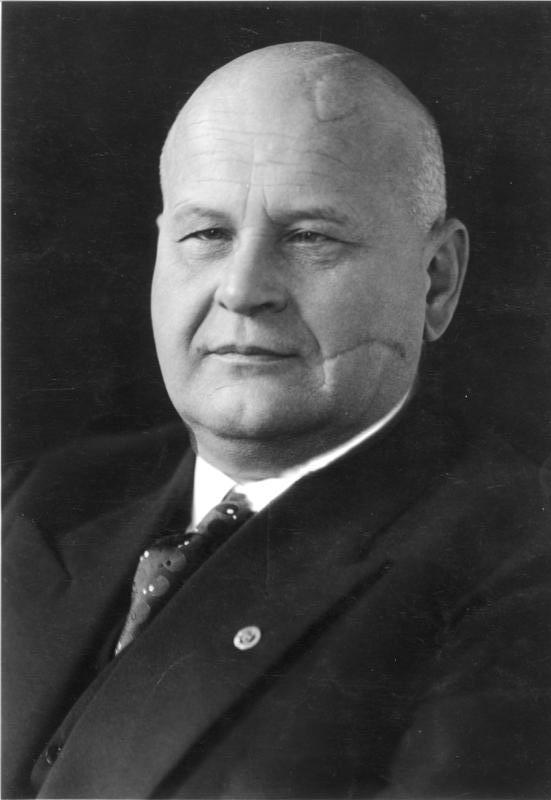Chapter 207: Namo and Faro in the Americas: - O Canada
National Monarchism (Namo) or Fascist Royalism (Faro) had risen in Canada after National Socialism (Nazi) parties became more and more unpopular in the late thirties/ early forties. Fascism in Canada (French: Fascisme au Canada) had never commanded a large following amongst the Canadian people, and was most popular during the Great Depression. Most Canadian Namo/Faro leaders were interned at the outbreak of the Second Great War under the Defence of Canada Regulations.
The Canadian Fascist Royalist Party:
The Canadian Fascist Party was a fascist politicial party based in the city of Winnipeg, Manitoba, Canada in the 1930s. The formative core of the party was a splinter group from the Canadian Nationalist Party that found the principles of corporativism to be more important than the largely racial motivations of the Nationalist Party. This disposition is highlighted in one official statement that "anti-semitism was a symptom of Germany not of Fascism". The party was founded as the British Empire Union of Fascists and was affiliated with the British Union of Fascists. It later became known as the Canadian Union of Fascists and Canadian Union. It published its own newspaper, The Thunderbolt. The party was led by Chuck Crate, who became leader at the age of 17. He had contacted the British Union of Fascists, who put him in touch with the party. John Ross Taylor of Toronto became the party's secretary and organizer. The party had a hard time attracting supporters because most Canadians who supported fascism leaned towards the racist brand espoused by Adrien Arcand and others. At the party's first meeting, there was an attendance of roughly 200 people. This disparity between the party and Arcand's would continue throughout its existence. Before the government took action against Canadian fascist parties, the Canadian Union of Fascists and Arcand's group held simultaneous fascist congresses in Toronto. While Arcand's group, dubbed the "National Union" drew a crowd of around 4,000, the Canadian Union managed to draw only some 30 local residents to its cause. Later the Canadian Fascist Party, became the Canadian Fascist Royalist Party, promoting their own independence and king instead of being ruled by a British King across the Ocean. They would have strong ties to American groups who favored the Axis Central Powers over Great Britain and the Commonwealth and had the dream of their own Canadian Revolution to become independent from England, like the USA had done before them.
The Parti National Social Chrétien and Canadian Union of Fascist Royalists:
Originally founded as the Canadian Union of Fascist, based in Winnipeg, Manitoba, was modeled on Great Britain and Oswald Mosley's British Union of Fascists. Its leader was Chuck Crate. Parti National Social Chrétien (English: National Social Christian Party) was founded in Quebec in February 1934 by Adrien Arcand. In October 1934, the party merged with the Canadian Nationalist Party, which was based in the prairie provinces. In June 1938, it merged with Nazi groups from Ontario and Quebec (many of which were known as Swatisca clubs), to form the National Unity Party. Fascist concepts and policies, such as eugenics, formulated in the US, found a friendly reception in Canada in some provinces, such as Alberta, where, under a Social Credit government, alleged mental defectives and other 'non-producers' were involuntarily sterilized to prevent the birth of more similar people. Social democrat Tommy Douglas, Premier of Saskatchewan, wrote his 1933 master thesis paper endorsing some of the ideas of eugenics, but later abandoned and rejected such notions. The Parti National Social Chrétien was identified with antisemitism, and German leader Adolf Hitler's Nazism. The party was later known, in English, as the Canadian National Socialist Unity Party or National Unity Party. Adrien Arcand formed the party in February 1934. Arcand himself was a Quebec-based fascist and antisemite. An admirer of Adolf Hitler, Arcand referred to himself as the "Canadian führer". In October 1934, the party merged with the Canadian Nationalist Party, which was based in the Prairie provinces. By the mid-1930s, the party had some success, with a few thousand members mainly concentrated in Quebec, British Columbia and Alberta. In June 1938, it merged with Nazi and other racist clubs in Ontario and Quebes, many of which were known as Swatiska clubs, to form the National Unity Party at a national convention held in Kingston, Ontario. At a time of English-French Canadian tension, Arcand tried to create a pan-Canadian (English and French) nationalist political movement. It was based on the National Socialist (Nazi) Party in Germany. Arcand then proceeded to Toronto where his new party held a rally of 800 supporters at Massey Hall. However, the anti-fascist Canadian League for Peace and Democracy held a simultaneous rally of 10,000 people at Maple Leaf Gardens in opposition to Arcand. Arcand's group was known colloquially as the "Blue Shirts", and commonly fought with immigrants, Canadian minorities and leftist groups. The group boasted that it would seize power in Canada, but the party exaggerated its own influence.
All of the National Monarchist (Namo) or Fascist Royalist (Faro) parties and groups were banned on May 30, 1940, under the Defence of Canada Regulations of the War Measures Act and many Namo/Faro leader and many of their followers were arrested and detained for the duration of the Second Great War. Some of their members favored breaking away from the British Empire and the Commonwealth to remain neutral, others favored joining the Axis Central Powers, or to create their own faction and alliance with the United States of America. Many Namo/Faro party members were told to obey the law but to work for a negotiated peace. Some escaped charges for treason by exiling and ended up in the Royal Canadian Navy. Just like the "British Union/ British Union of Royalist Fascists and National Monarchists", and the "British Empire Union/ British Empire Union of Royalist Fascists and National Monarchists" as a head organization in the whole Commonwealth, the "Canadian Union/ Canadian Union of Royalist Fascists and National Monarchists" was weakened by the many Namo/Faro organizations, groups and parties that competed against one another to lead Canada into the future and even had goals that sometimes excluded one another. While they had some things in common with the Canadian Communists and Comintern (like the wish to stay neutral with ideas like Defence Scheme No. 2 from the First Great War should the United States and Japan start going to conflict and fighting each other). These Canadian Communists/ Canadian Comintern (called CC's) however dreamed of destroying the Royal Constitutional Monarchy altogether and Unify Canada in a Socialist Utopia without classes and rulers. On the other hand they dreamed of a united Fascist Royalist Canada and were in heavy dispute against these Namo/Faro factions like the Nouvelle-France movement of the Québécois nationalism in former French Canada that was heavily supported by French Emperor Napoléon VI. They wished for their own independent nation and strongly protested the forced conscription of their people for the British Empire and the Commonwealth in all of Quebec from major cities and smaller towns. The Axis Central Powers, mostly France and Germany supported the Canadian Blue Shirts that were forced underground. They managed to unify some of these Namo/Famo parties, groups and organizations that feared to be to weakened and decentralized now united with Axis Central Power support and formed the Iron Maple as a unifying umbrella organization. The goal was to unify, guide and support all the different parties, groups and organizations in a combined effort to bring down the Allies.






